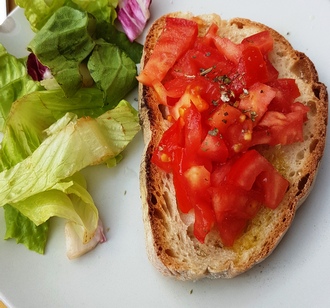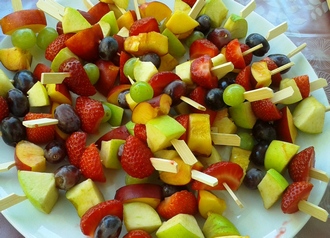Chapter 2 – Role of teachers
Parents are children first role models, but when child comes to kindergarten, teachers become equally important. Family/parents opinion is still very important, for example: when parents are model for healthy eating, children express greater interest in healthy food.
Teachers and caregivers become role models by engaging with children at mealtime and sitting down and eating with them. This practice is often called family-style dining.
Developing positive eating behaviour
Teachers can help children develop positive early eating behaviours with decreasing food fears (neophobia), positive experience with engagement of teachers, and with enjoyable and fun atmosphere.
The acceptance of new foods is a slow process. Particularly through the ages 2 to 5, persistence is essential (Birch 1999; Satter 2008). It is very important that teacher praise the child when she is good and call her by the name. It can´t be too much of praising. Teacher is creating warm, acceptable atmosphere which is very important for adopting a new knowledge.
Food restriction and food pressuring
Restricting or forbidding unhealthy foods doesn´t decrease children’s preference for them, but the opposite is true (Satter 2008). Pressuring a child to eat one type of food (such as fruit or vegetables) leads to resistance.
Emphasis on having a “clean plate” may hinder children’s recognition of the internal cues of hunger and satiety and contribute to overeating (Satter 2008). That´s why respecting child’s expression of food preference and fullness (particularly if the child tastes a food) is very important!

Sometimes how to eat is more important than what to eat
Pre-schoolers have two common preferences. Firstly, they prefer routine in daily life. Most children need some structure and routine to their day. Generally, they prefer meals and snacks at regular times, as governed by the family’s lifestyle.
Secondly, they prefer simplicity. Many children may like simply prepared, mild tasting foods that they can easily identify. They prefer foods they can manage, for example, cut-up vegetables they can eat with their fingers and soups they can drink from a cup (Sigman-Grant M. 1992). It is estimated that children eat more fruit or vegetable, if it is cut into pieces, because is more comfortable. Use vegetables in other forms: as a sauce, in muffins, as cream soup ... and increase the possibility of eating it. (http://prehrana.si/moja-prehrana/predsolski-otroci)

Children prefer:
- raw, coloured vegetable of bright colours better than cooked vegetable. Red colour is especially appealing to children (if possible, add a piece of red food).
- warm food better than hot food
- mild tastes
- soup without legume skin
- funny meals: little tables, sandwiches of geometric shapes with funny names, everything eaten in a company of their friends
- cooperating at composing the menus and preparing meals
- only one or two new dishes at once, which should be offered often and always when child is hungry, at the beginning of meal or after play
(based on Rady Rolfes S., Pinna K.,Whitney E.)



